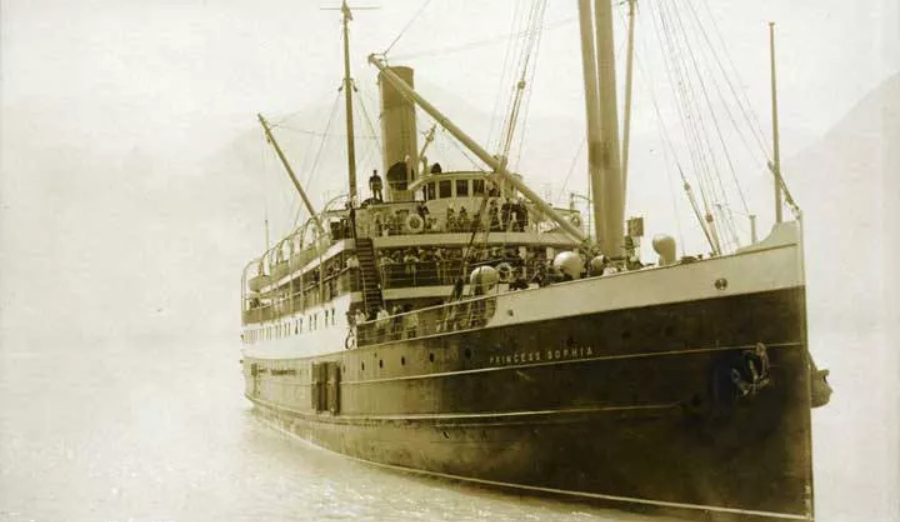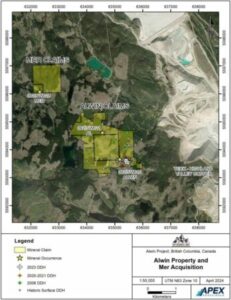The SS-Princess Sophia
The SS-Sophia, the largest of six ships that made up the Canadian Pacific Railway’s Princess Fleet. The Sophia was lost in October 1918, along with her passengers and crew. An estimated 1 in 10 people in Dawson City were aboard along with many employees from the Engineer Mine.
The SS-Princess Sophia (pron. soph-eye-ya), a “pocket-liner” operated by the Canadian Pacific Railway (CPR) Company, offered many of the amenities of larger ocean-liners. It ran aground Vanderbilt Reef, near Juneau Alaska, on October 23, 1918. All 364 passengers died making it the worst maritime accident in the history of BC and Alaska. For the city of Dawson City, it was especially devastating – an estimated one on ten DC residents perished. For the Engineer Mine, many of those lost were mine employees.
The Sophia’s route connected Vancouver and Victoria with the north island community of Alert Bay, and the mainland coastal communities of Prince Rupert, Wrangell, Ketchikan, Juneau and Skagway – all of whom acted as service hubs to the inland hamlets and communities that remained long after the various gold rushes in the area. At the time of it’s loss, the Sophia was traveling south on it’s last run of the season.
The Lynn Canal is the deepest fjord in North America and one of the deepest and longest in the world [Source: Wikipedia]. Vanderbilt Reef, essentially an underwater mountain, is a well-known hazard. So how Sophia wound up atop the reef is a matter of some conjecture. As all the ships officers perished and the log book was never recovered, accounts of Sophia’s loss come from eyewitness accounts from vessels who circled Sophia in the bad weather, but were unable rescue her during her 40 hour stay on the reef.
News of Sophia’s loss quickly faded in Vancouver and, Victoria especially. Within days, the loss of the HMCS Galiano and it’s crew – all from Victoria – bumped the Sophia from the front page. Within two weeks, crowds filled the street to celebrate the end of World War I.
The formal inquest into the disaster lasted less than five-months; it placed no blame on either the CPR nor it’s Captain despite allegations that while the weather was bad, it was suficiently calm to facilitate a safe transfer of Sophia’s passengers and crew to nearby rescue vessels. With the inquest over, the matter concluded quickly – the CPR compensated the rescue vessels, paid for transport and burial of Sophia’s victims and paid a gratuity to the victim families. CPR divers recovered the safe, $ 70,000 in currency, 230 lbs of gold and the CPR continued to operate the Princess Fleet for another 40 years.
To learn more about the sinking of the Princess Sophia, some excellent resources follow:
The S.S. Sophia
Wikipedia.org
https://www.nps.gov/articles/khns-princess-sophia.htm













